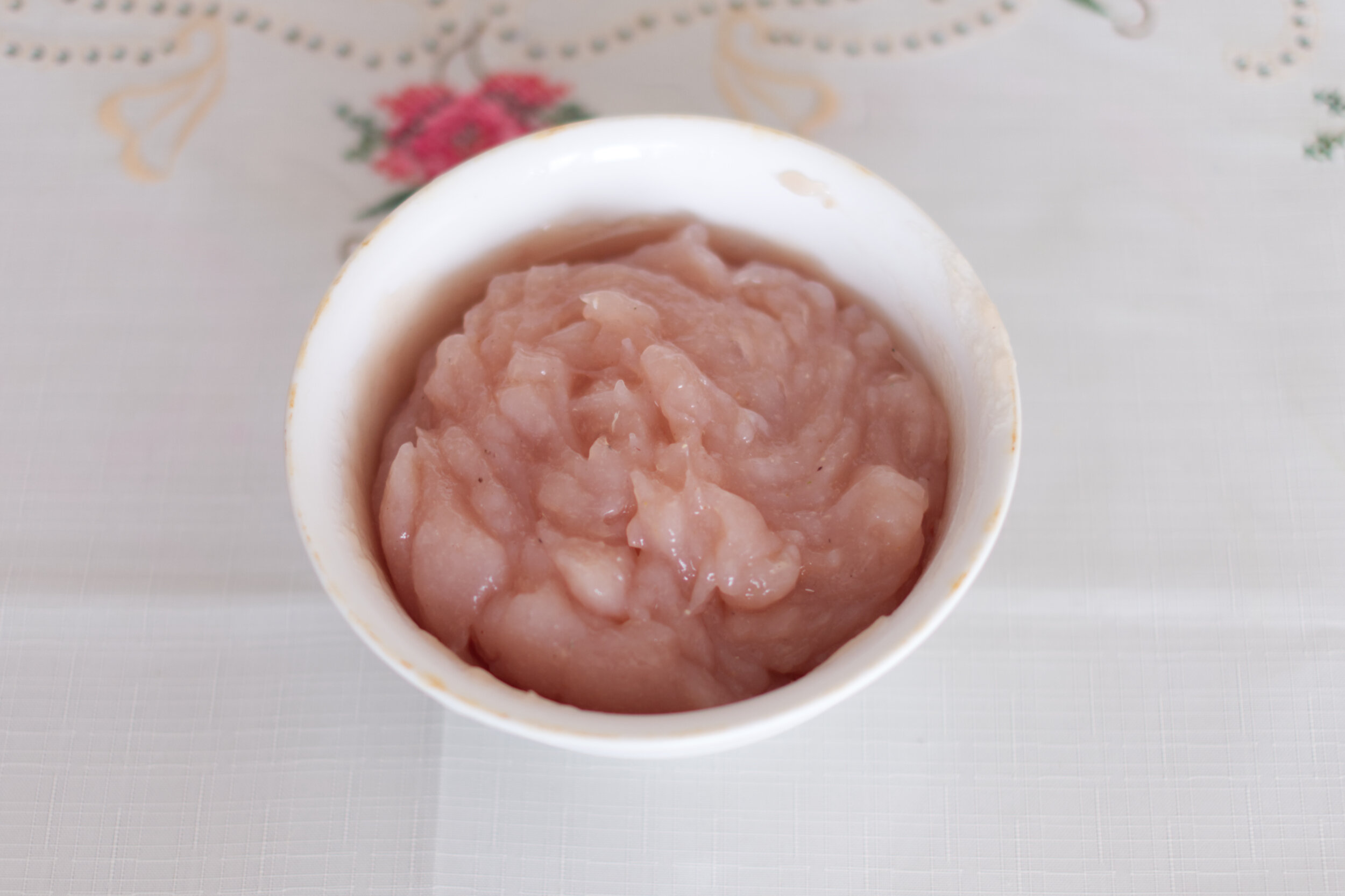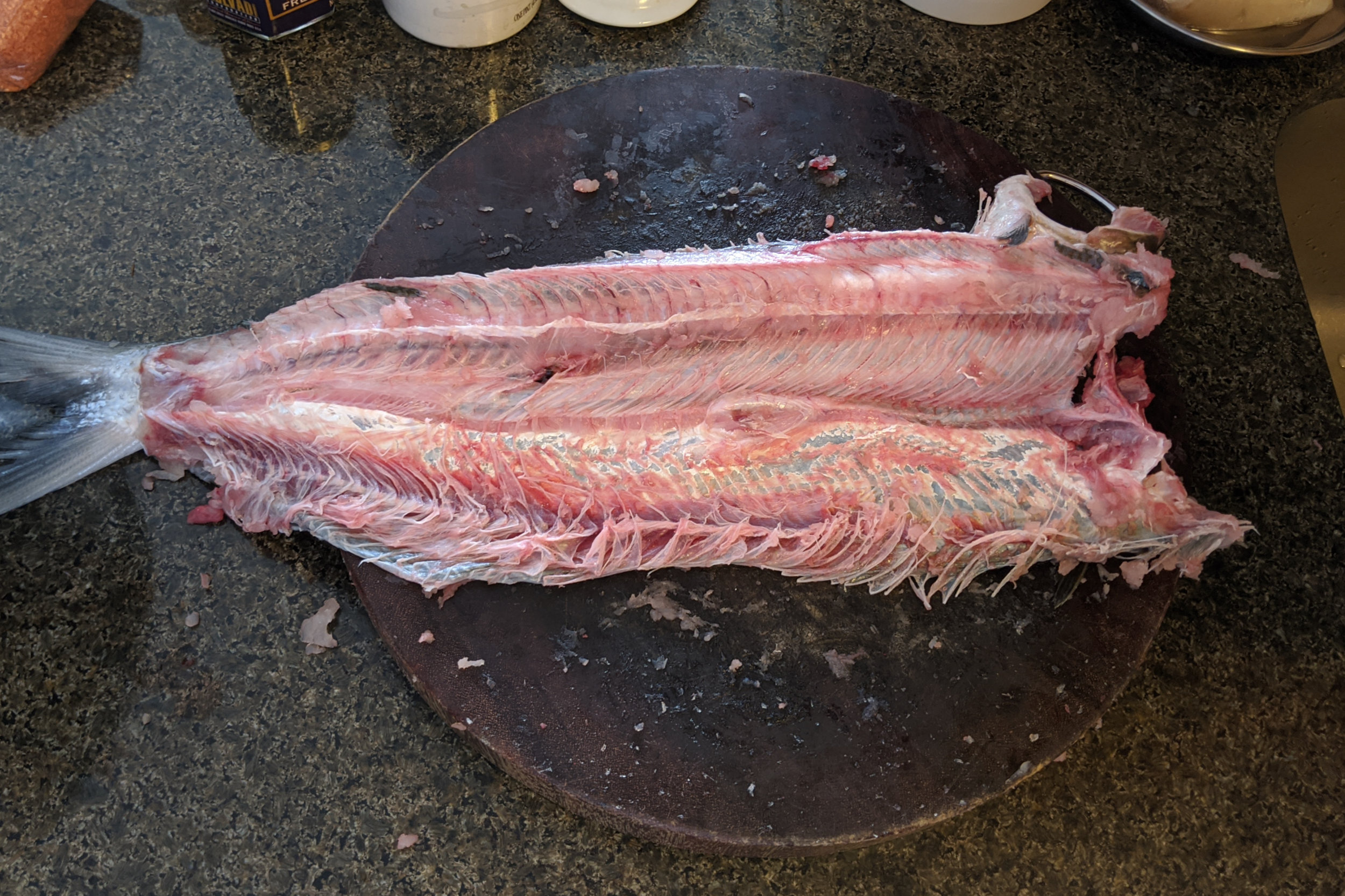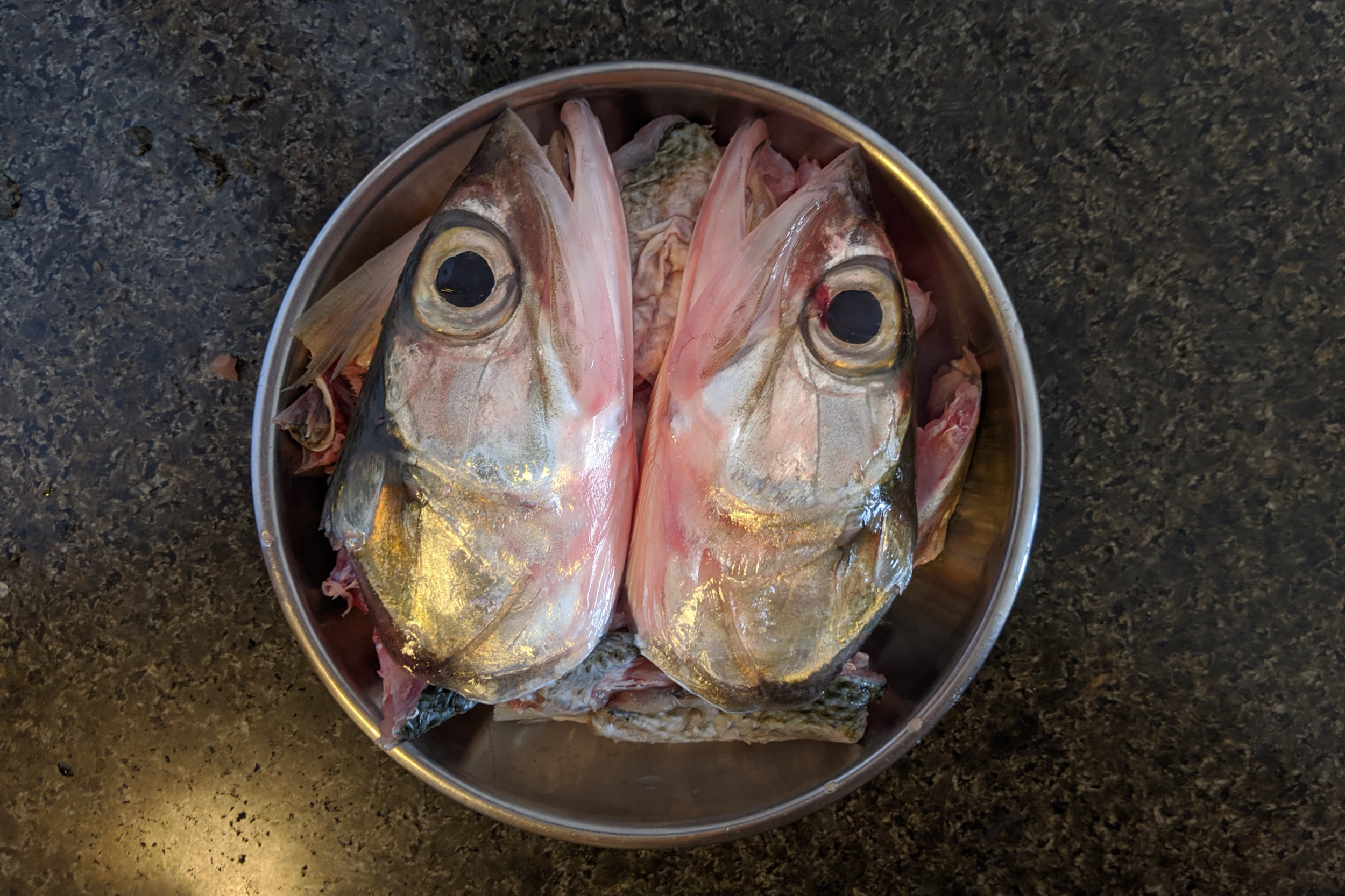Fishcake - 魚餅 - Yu Bing

I’m taking some time to visit my family back in Honolulu. For many of my family, talking about food and cooking is a good way to spend time with them. They’re pretty enthusiastic about teaching me and we have a lot of good cooks in the family. One thing I wanted to learn how to make was fishcake from scratch. I don’t think too many people make this from scratch these days because of the work involved. It’s not too bad, but it’s still something that takes some practice.
I’m also taking the chance to record some videos of my folks showing me how make this stuff. Since I have zero experience in shooting video and this is all done through a Pixel 3, the production isn’t going to be great, but it’s good to capture some of the things that are hard to learn over the phone or through writing.
I made a mistake and didn’t record my dad butchering the fish. It’s a method that’s specific to this fish, but he partially butterflies the fish starting with the spine and leaving the belly intact. Other fish might be butchered differently, but the most important thing is getting access to the most meat as possible to scrape with a spoon. You can use other types of fish and they may need other slight adjustments to the way it’s butchered. Part of the reason my dad butchered the fish this way was to keep the bones and skin relatively whole for making fish stock later. You can also use fillets as well.
When this was made, my uncle and took over how to make it. He’s currently a cook at a Cantonese restaurant so he really knows his stuff. It’s funny how my dad and my uncle talks shop about cooking and usually argue about how dishes are supposed to be done. The way it was made in the end was really good.
For this recipe we used awa. Not to be confused with awa awa which is a different fish, awa is more angular in its body shape and head shape. Where as awa awa has a more rounded cross-section and round head. I looked up awa and found it to be called milkfish, but it can be tough to identify it if it’s frozen fillets at the grocery store elsewhere and this is kind of a generic name which can change regionally in the US. This isn’t the only kind of fish that can be made into fishcake, lots of other kinds can be used so it depends on what’s available and how you can make it work out well with those particular kinds of fish.
Since I’m learning this from Cantonese folks, it should be not a surprise that this is minimally seasoned. There’s no filler like eggs or any kind of flour added to it. There are three main textures to fishcake. Water is added for 滑 waat or smoothness. Salt is important for 彈牙 daan gna or a term that's a little rough to translate other than springiness. Last, there's slapping the mixture in a bowl that releases 肉膠 yuk gaau or meat glue. This is important in binding fishcake together.
The recipe is still not very exact since the amounts can vary by fish, but the proportions below should be able to work well. What’s not shown in the video is that we added a little bit more water and salt afterwards.
RECIPE:
Awa, about 3 lbs (yields about 2 1/2 cups of fish meat)
Water, about 2 1/2 cups
Salt, about 2 spoons
Chicken bouillon, about 1 1/2 spoons
White pepper, about 1 spoon
Descale and gut the awa, removing any blood in the cavity of the fish.
With a knife, reverse butterfly the awa starting from the spine and near the belly. Don’t cut all the way through the belly on both sides.
With a spoon scrape as much meat out of the awa and set in a large bowl. Save the fish head and remaining skin and bones for fish stock.
Add about 1 cup of water and mix to combine, using your hands to also break down any large pieces of fish meat. When the water is incorporated, add 1 cup more and mix again. In the same bowl, add the salt, chicken bouillon, white pepper and about 1/2 cup of water and mix to combine. When this has been combined, lift and throw into the bowl to release the 肉膠. Continue to throw the fishcake against the bowl for about 3-5 minutes or until you reach the desired texture.
In a small pot, heat over medium high heat. Do not let the water come to a boil. When the water just becomes a boil, either shut off the heat or set the heat on low. With a spoon, scoop out a fishball or two and poach for a few minutes. When the fishcake floats it is nearly done and only needs to cook about 1-2 minutes more. Be careful not to let the water boil while the fishcake is being poached. If the water gets too hot, bubbles will form on the inside of your fishballs and it will also likely be overcooked. If you are unsure, take a pair of scissors and cut one open to see if it’s cooked all the way through. Taste this to see if you need to adjust adding more salt and/or water.
Fishcake should be eaten as soon as possible. If it’s as fresh as we got in this case (fish was caught the same day it was made), then it can be stored in the fridge for 3 to 4 days. Otherwise, it should be frozen and then thawed and good for 2 to 3 days in the fridge. Outside of Hawaii or other places with great access to seafood, I’d try and use it even sooner.
Fishcake can be poached and it’s really good to dip with whatever favorite hot sauce you like or hot mustard. It can also be fried or or pan fried as well.







